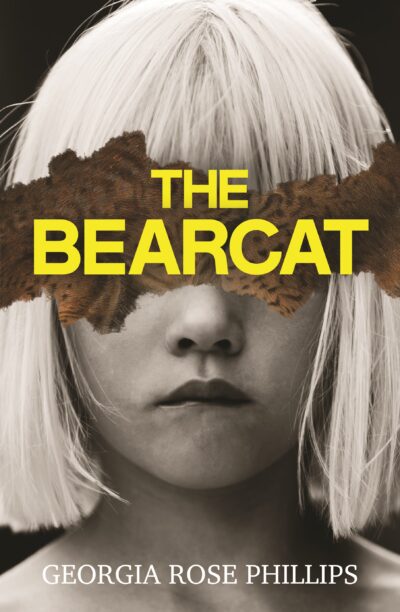
- Free Article: No
- Contents Category: Fiction
- Review Article: Yes
- Article Title: The night that forgot
- Article Subtitle: An admirably inventive début
- Online Only: No
- Custom Highlight Text:
A scanning of programs on any streaming service will reveal that the phenomenon of the cult, both real and imagined, continues to fascinate the public imagination. One notorious historical example, and the subject of recent documentaries and a gripping TV series, is a group called The Family, which operated undetected from the late 1960s for over twenty years in a secluded rural property near Lake Eildon in Victoria. What makes this case so unusual is the fact that its leader was a woman: the glamorous, pathologically narcissistic Anne Hamilton-Byrne. Shockingly, as many as twenty-eight of the victims were children who were subject to brainwashing and sustained physical abuse. Discovered and released in 1987, many of those children suffered lasting trauma and some committed suicide. In a stroke of terrible irony, Hamilton-Byrne never faced justice for her heinous crimes because the law judged the testimony of the children to be unreliable.
- Book 1 Title: The Bearcat
- Book 1 Biblio: Picador, $34.99 pb, 308 pp
- Book 1 Cover Small (400 x 600):

- Book 1 Cover (800 x 1200):

- Book 1 Readings Link: https://www.readings.com.au/product/9781761266386/the-bearcat--georgia-rose-phillips--2025--9781761266386#rac:jokjjzr6ly9m
This inhumane cult is now explored in Georgia Rose Phillips’s immersive début novel The Bearcat, which is named after the 1920s slang word for a fiery, fiercely competitive individual. An earlier work of fiction, J.P. Pomare’s In the Clearing (2019), also takes The Family as a source of inspiration, but while his novel is a commercial psychological thriller, The Bearcat is an extensively researched, formally challenging work of literary fiction which focuses not on the ghastly details of abuse but on the social, historical, and psychological factors which influenced the creation of the cult. One is the susceptibility of certain women to the idea of the ‘happy family’. Early in the novel, we hear the voices of formerly unhappy wives and mothers, stigmatised unmarried mothers, and infertile women speak of having been persuaded by a cunningly self-interested Anne to relinquish their biological or adopted children to her ultimately lucrative ‘care’.
Another crucial factor, and the novel’s main concern, is the role of the patriarchal family in creating The Family. Set mainly in the period 1921 to 1941, The Bearcat alternates the third-person perspectives of Anne and her mother Florence to gradually reveal their psychological damage at the hands of an authoritarian and emotionally rigid husband and father. Densely interiorised chapters capture Florence’s feelings of helplessness as a highly anxious mother and her yearning for emotional intimacy and lost sensual pleasure as a wife. Anne, a fractious baby who becomes the ‘bearcat’ child of the novel’s title, is fuelled with anger at her father’s ruthless indifference to her emotional needs. By way of compensation for her powerlessness, Florence comes to believe that her daughter is the incarnation of Jesus Christ, while an adult Anne uses this story as one of several strategies for luring and controlling her followers.
In charting the lives of these two female characters, Phillips imaginatively inhabits, rather than merely describes, their inner lives; their fears and desires, and their resentment about their lack of a happy family, are vividly, convincingly, realised. This sense of two deeply fractured selves is also enacted through the use of several narrative techniques of indirection. The alternation of the characters’ perspectives evokes a sense of distance between them, while counterpointing the details of their unhappiness. The achronological structure encourages readers to piece together a coherent narrative of selfhood which eludes both mother and daughter. By denying the patriarch an interiority, Phillips reinforces his emotional hollowness and incapacity for self-reflection.
While this critique of the traditional family thus cleverly avoids didacticism, there are some problematic gaps in the narrative. Even though a novel based on a true story must be selective in its representation of events, especially when that story extends across a considerable tract of time, certain omissions detract from the psychological credibility of this narrative. We learn, for example, that Anne is the eldest of seven children, but none of these children appears in the novel. The arrival of such a brood would surely have had a profound effect on a previously only child. There is no narrative bridge, either, between the adult Anne’s sorrowful widowhood and the vital steps that led to her startling reinvention as a self-aggrandising cult leader, including her co-option of influential doctors and lawyers. Her miscarriage is glossed over. Nor are there any scenes about Florence’s repeated treatments in psychiatric hospitals; it is a telling lacuna in a narrative which presents her deteriorating mental health as an important key to understanding her character.
Aside from such structural problems, The Bearcat is intelligent, ambitious, and an admirably inventive novel. It is also a great pleasure to read. The writing is variously embellished or plain and always assured. Here is just one small example of Phillips’s skilful use of language, a scene in which a young Florence, having been aroused by an unexpected homoerotic encounter, places her sleeping baby in a cot: ‘Then, as she lingered in the cut-out of the doorway, she sensed that, outside, the night had already started to age and forget them.’ Linguistically precise, poignantly understated and deftly metaphoric, the dying fall at the end sounds the impossibility of escape from conventional domesticity.
Phillips has previously published acclaimed short stories and poetry, and her début novel is enriched by her skills in both genres. The Bearcat shows a short story writer’s talent for combining conciseness and resonance to create engaging moments in time. The writing is enhanced by a poet’s keen ear for the sounds of words and the rhythm of sentences. The Bearcat is an impressive addition to recent memorable novels about cults, including Laura Elizabeth Woollett’s Beautiful Revolutionary (2018) and Emma Cline’s The Girls (2016). The novel leaves us with Anne, in one of the most ethically satisfying and haunting conclusions I’ve read for some time.


Comments powered by CComment